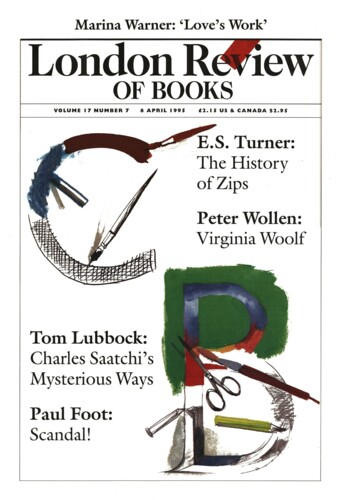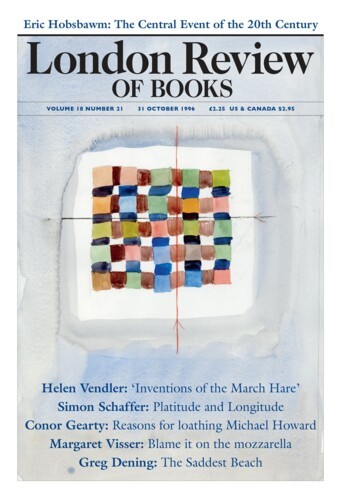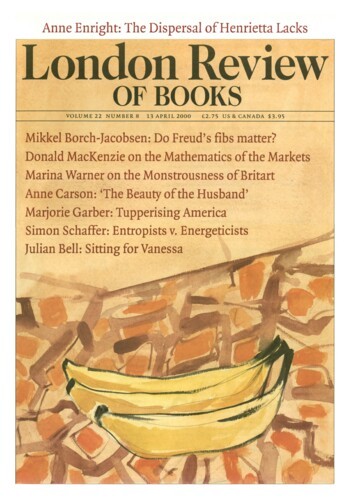Knick-Knackatory
Simon Schaffer, 6 April 1995
‘The British Museum – not a Museum of Britain’, so reads the caption on a photograph of the Museum’s imposing portico, at the start of a recent survey of national collections conducted by the Museums Journal. The BM is not an exhibition of the nation nor does it incorporate one coherently developed collection. Until well into the 19th century it housed the legacy of the Royal Library, the Classical legacy of the Mediterranean world, colonial natural history, and a host of private cabinets of curiosity, in apparently chaotic if snooty profusion. Radicals attempted to replace the Museum’s aristocratic, Tory management with more scientific and professional direction in the dangerous decade of the 1830s, but the natural history collections were not shifted to Waterhouse’s great palace in South Kensington until the 1880s, and they only seceded from Bloomsbury’s control in 1963. The Museum’s ethnographic holdings, which, unlike some other collections in Europe, do not now count as a branch of natural history, were moved to Burlington House. In 1973, the British Library was formally split off, followed almost at once by plans to shift its collections away from Great Russell Street. Now the holdings of the Museum of Mankind are slowly returning, as the Library even more slowly moves to St Pancras. These wanderings, and the complex controversies which surround them, are eloquent testimony to the intimate relationship between the British Museum and the patchwork of national heritage. So though we might agree, and might even sometimes be grateful, that Britain lacks a museum of the nation, it does possess in this museum a richly fascinating, if often infuriating, emblem of its varying conceptions of value and culture.’





